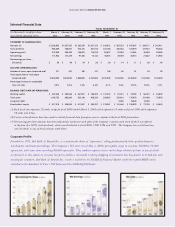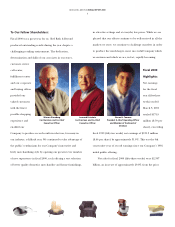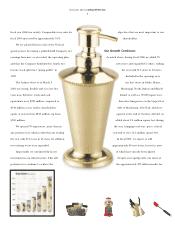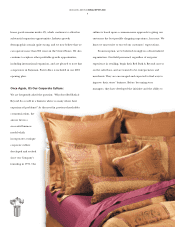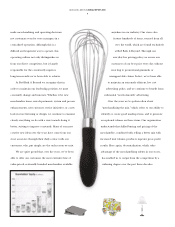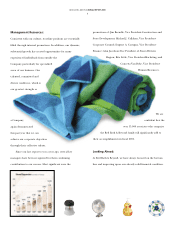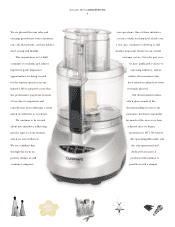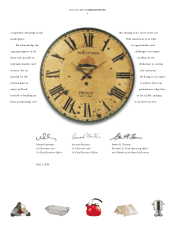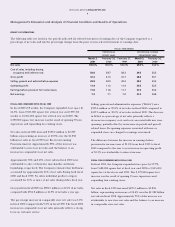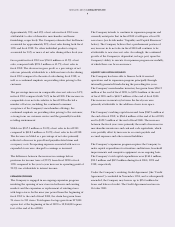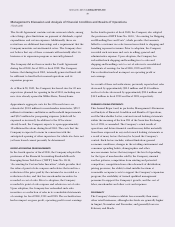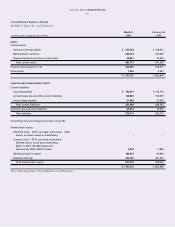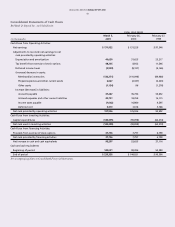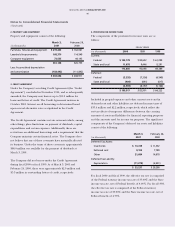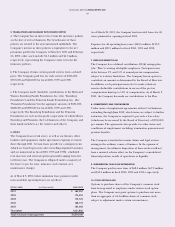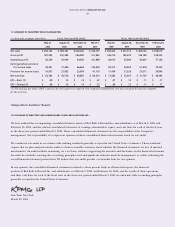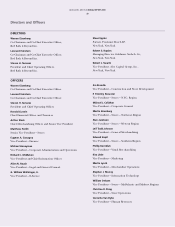Bed, Bath and Beyond 2000 Annual Report Download - page 12
Download and view the complete annual report
Please find page 12 of the 2000 Bed, Bath and Beyond annual report below. You can navigate through the pages in the report by either clicking on the pages listed below, or by using the keyword search tool below to find specific information within the annual report.
BED BATH & BEYOND ANNUAL REPORT 2000
10
The Credit Agreement contains certain covenants which, among
other things, place limitations on payment of dividends, capital
expenditures and certain expenses. Additionally, there are
restrictions on additional borrowings and a requirement that the
Company maintain certain financial ratios. The Company does
not believe that any of these covenants will materially affect its
business or its expansion program as currently planned.
The Company did not borrow under the Credit Agreement
during fiscal 2000, fiscal 1999 or fiscal 1998. The Company
believes that during fiscal 2001, internally generated funds will
be sufficient to fund both its normal operations and its
expansion program.
As of March 30, 2001, the Company has leased sites for 62 new
superstores planned for opening in fiscal 2001, including one
new store already opened in Wilkes Barre, Pennsylvania.
Approximate aggregate costs for the 62 leased stores are
estimated at $91.8 million for merchandise inventories, $39.3
million for furniture and fixtures and leasehold improvements
and $16.5 million for preopening expenses (which will be
expensed as incurred). In addition to the 62 locations
already leased, the Company expects to open approximately
18 additional locations during fiscal 2001. The costs that the
Company is expected to incur in connection with the
anticipated opening of other superstores for which sites have not
yet been leased cannot presently be determined.
RECENT ACCOUNTING PRONOUNCEMENTS
In the fourth quarter of fiscal 2000, the Company adopted the
provisions of the Financial Accounting Standards Board’s
Emerging Issues Task Force (“EITF”) Issue No. 00-14,
“Accounting for Certain Sales Incentives”, which provides that
the value of point of sale coupons and rebates that result in a
reduction of the price paid by the customer be recorded as a
reduction of sales, and that free merchandise incentives be
recorded as cost of sales. Prior to adoption, the Company
recorded its point of sale coupons and rebates in cost of sales.
Upon adoption, the Company has reclassified such sales
incentives as a reduction of sales in its consolidated statements
of earnings for fiscal 2000, 1999 and 1998. The reclassification
had no impact on gross profit, operating profit or net earnings.
In the fourth quarter of fiscal 2000, the Company also adopted
the provisions of EITF Issue No. 00-10, “Accounting for Shipping
and Handling Fees and Costs”, which provides that amounts
billed to a customer in a sale transaction related to shipping and
handling represent revenues. Prior to adoption, the Company
recorded such revenues and costs in selling, general and
administrative expense. Upon adoption, the Company has
reclassified such shipping and handling fees to sales and
shipping and handling costs to cost of sales in its consolidated
statements of earnings for fiscal 2000, 1999 and 1998.
The reclassification had no impact on operating profit or
net earnings.
As a result of these reclassifications, previously reported net sales
decreased by approximately $20.5 million and $14.9 million
and cost of sales decreased by approximately $20.4 million and
$14.9 million in fiscal 1999 and fiscal 1998, respectively.
FORWARD LOOKING STATEMENTS
This Annual Report and, in particular, Management’s Discussion
and Analysis of Financial Condition and Results of Operations,
and the Shareholder Letter, contain forward looking statements
within the meaning of Section 21E of the Securities Exchange
Act of 1934, as amended. The Company’s actual results of
operations and future financial condition may differ materially
from those expressed in any such forward looking statements as
a result of many factors that may be beyond the Company’s
control. Such factors include, without limitation: general
economic conditions, changes in the retailing environment and
consumer spending habits, demographics and other
macroeconomic factors that may impact the level of spending
for the types of merchandise sold by the Company; unusual
weather patterns; competition from existing and potential
competitors; competition from other channels of distribution;
pricing pressures; the ability to find suitable locations at
reasonable occupancy costs to support the Company’s expansion
program; the availability of trained qualified management
personnel to support the Company’s growth; and the cost of
labor, merchandise and other costs and expenses.
SEASONALITY
The Company’s business exhibits less seasonality than many
other retail businesses, although sales levels are generally higher
in August, November and December, and generally lower in
February and March.
Management’s Discussion and Analysis of Financial Condition and Results of Operations
(Continued)


